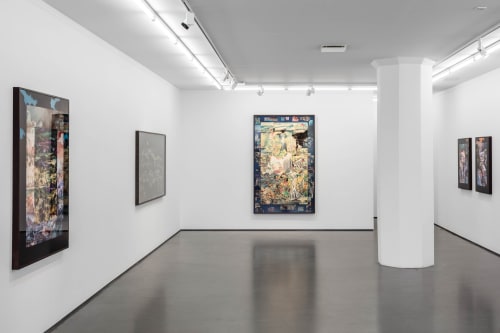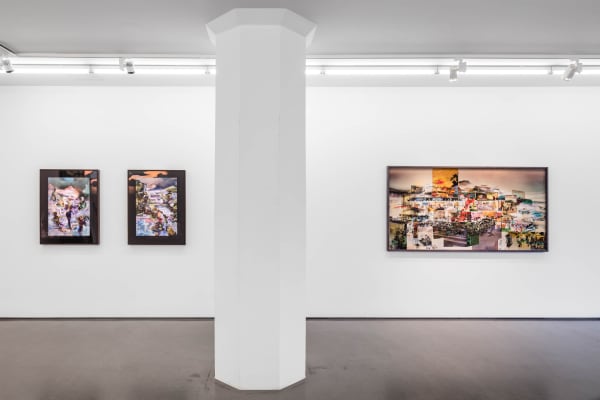David Molander – Elfenbenstornen
In his new project, Elfenbenstornen, Molander works with collages from historical art works which have been digitally transformed into multilayered compositions. In Cranach's Renaissance paintings, Japanese woodcuts from the 18th and 19th centuries, contemporary comics and Indian miniature paintings, David Molander has found a plethora of new material. While previous works have focused on visual traces found in contemporary urban environments based on documentary material, he now turns his attention to landscape painting, mythology, portraiture and woodcuts. But he has not completely abandoned his own footage - images from Tokyo appear as fragments in the framework of the woodcut collages.
With a characteristic attention to detail, Molander uses an intuitive process of dissecting the images in terms of composition and texture, letting his own imagination guide him in what may be described as a deliberate escape from reality. The title of the exhibition, Elfenbenstornen (The Ivory Towers), acknowledges a more introspective working process than before, influenced by children's books, computer games, comics and popular culture. But the city and urbanity are bound to appear in different forms and shapes even in a historical context. It becomes visible in how Molander approaches the contrast between the city and its surrounding landscape in Indian miniature painting, or in the interplay between architecture and the construction of gender in ancient Japanese woodcuts.
-
 Installation view, David Molander, Elfenbenstornen, 2017, Cecilia Hillström Gallery. Photo: Jean-Baptiste Béranger
Installation view, David Molander, Elfenbenstornen, 2017, Cecilia Hillström Gallery. Photo: Jean-Baptiste Béranger -
 Installation view, David Molander, Elfenbenstornen, 2017, Cecilia Hillström Gallery. Photo: Jean-Baptiste Béranger
Installation view, David Molander, Elfenbenstornen, 2017, Cecilia Hillström Gallery. Photo: Jean-Baptiste Béranger -
 Installation view, David Molander, Elfenbenstornen, 2017, Cecilia Hillström Gallery. Photo: Jean-Baptiste Béranger
Installation view, David Molander, Elfenbenstornen, 2017, Cecilia Hillström Gallery. Photo: Jean-Baptiste Béranger




